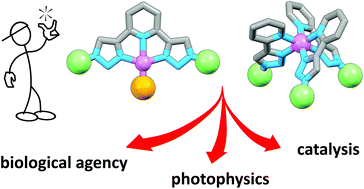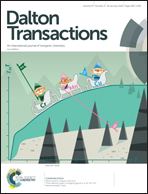Functional metal complexes from CuAAC “click” bidentate and tridentate pyridyl-1,2,3-triazole ligands
Abstract
Ligands containing the bidentate 2-pyridyl-1,2,3-triazole and tridentate 2,6-pyridyl-bis(1,2,3-triazole) moieties have emerged as alternatives to 2,2′-bypridine and 2,2′:6′,2′′-terpyridine and other nitrogen-containing bi- and tri-dentate chelators. Because these “click” ligands are readily functionalised they are attractive options for the development of functional coordination complexes. This Frontiers Article discusses key recent reports on functional CuAAC “click” complexes in the areas of biological agency, photophysics, and catalysis.

- This article is part of the themed collection: 2018 Frontier and Perspective articles


 Please wait while we load your content...
Please wait while we load your content...